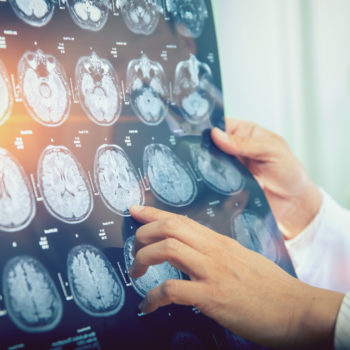Migraine is often not just a headache. The affected patients, in fact, complain of various symptoms associated with pain and among these there are also nausea and vomiting. How can they be managed? We discuss this with Dr. Vincenzo Tullo, a neurologist specialist and head of the humanitas Migraine clinic.
Headache
In Italy, just over one in ten people are affected by migraines, one of the most widespread and debilitating forms of headaches. In particular, the most affected individuals are women: the ratio compared to the males is three to one. The typical migraine pain is pulsating and tends to be a unilateral pain.
The pain attacks may last for a few hours but may even take up to 72 hours and are often predicted by prodromal symptoms such as yawning, sensitivity to cold, neck stiffness, lack of appetite or search for particular foods. In the form of migraine with aura – which involves about one in five patients – the symptoms are anticipated by sight disturbances, tingling fingers or face or difficulty in verbal expression with a duration of less than 60 minutes.
This type of headache is also associated with some symptoms such as photophobia and phonophobia, or intolerance to light and noise, and the presence of vomiting and nausea. However, the latter are more common in patients suffering from chronic migraines, who experience headaches more than fifteen days a month in a period of three months.
The treatment
Medications can be taken to mitigate the pain: ‘Symptomatic migraine therapy involves triptans acting on serotonin receptors as primary-choice drugs and inducing vasoconstriction of the intracranial arteries’, recalls Dr. Tullo. ‘Triptans – he continues – are generally effective both on pain and associated symptoms and therefore do not require association with anti-vomiting drugs. If a dose of tripthane is not sufficient, you can take a second dose after at least two hours or you can add an NSAID analgesic. NSAIDs are indicated in mild to moderate intensity migraines episodes or when triptans are ineffective’.
What can you do in case of migraine of high intensity? ‘A triptan and an NSAID can be associated from the beginning. If nausea and vomiting persist, an antiemetic can be used, such as metoclopramide or domperidone which, in addition to preventing vomiting, can accelerate gastric emptying by favoring the absorption of the analgesic’.
“The analgesic is way more effective on pain and associated symptoms when it is taken early. It is important to not exceed the maximum number of 10-14 analgesics taken in a month in order to avoid the occurrence of a rebound effect with worsening and chronicity of the headache, as well as to reduce the risk of side effects’, concludes the expert.










